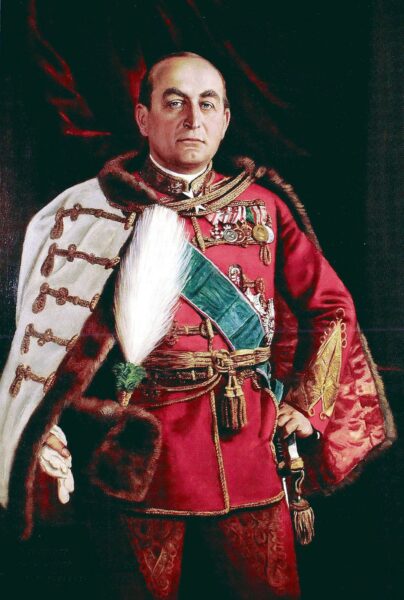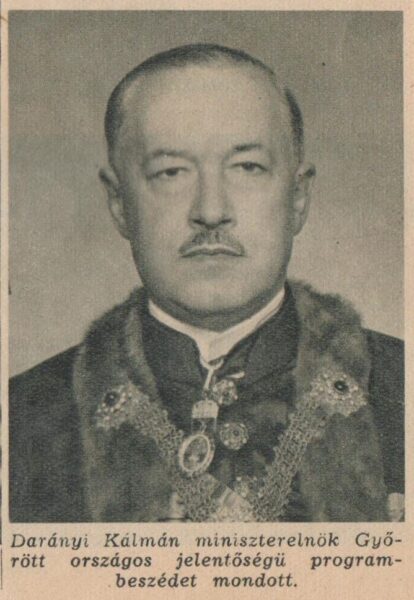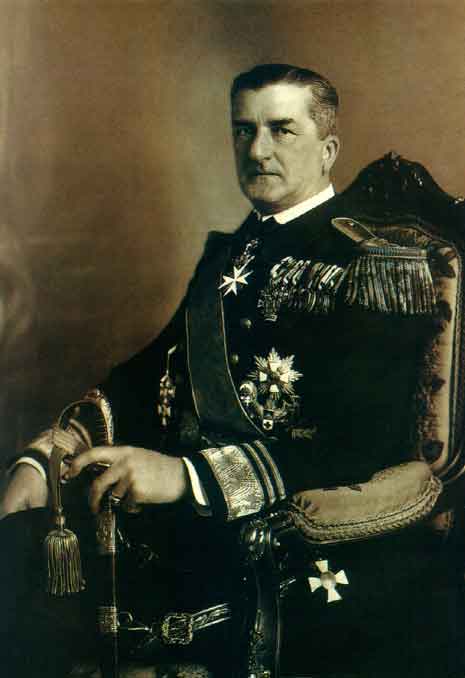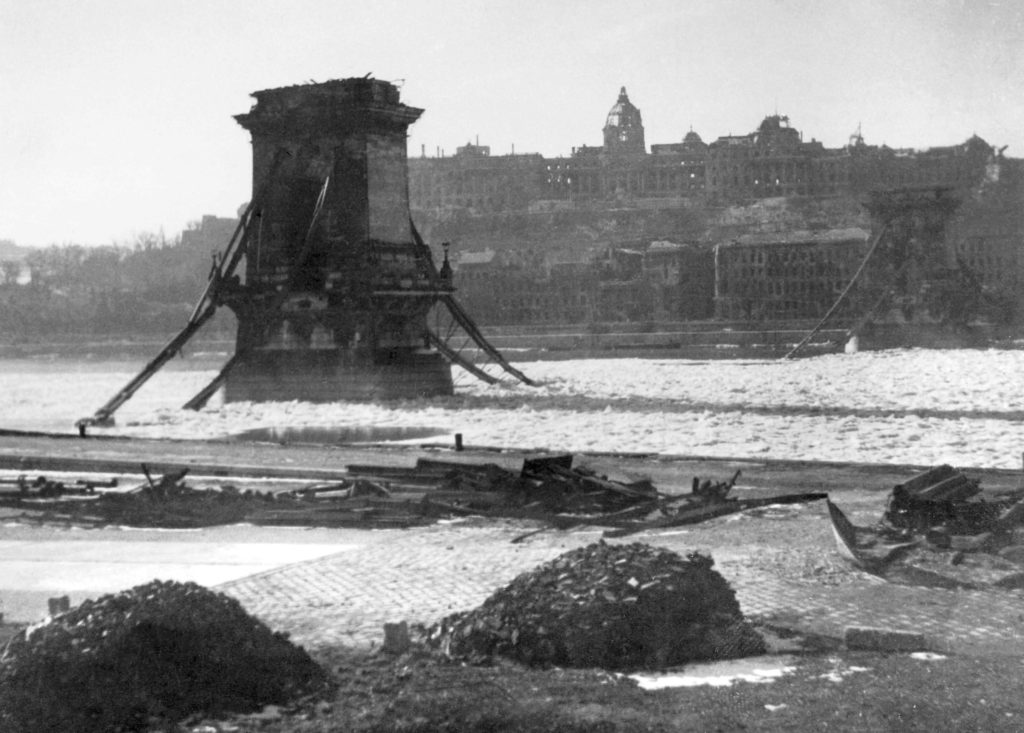I ended the previous post when, some 18 months after the armistice that brought World War I to its close, Hungary signed the Treaty of Trianon that left it not only considerably smaller in both area and population but substantially resource poorer than it had been before the war. Now we can take a cursory look at how the Hungarians tried to cope with this new reality, the country’s transition from constitutional monarchy first to fascism, then to communism, and finally to its present system that it describes as a capitalist constitutional democracy. I’ll also try to give a sense of how the nation fared through each of those periods.
The Interwar period and World War II.
The Hungarian People’s Republic formed in the immediate aftermath of World War I just a week after the Armistice was signed on 11 November 1918. That government was overthrown four months later in March 1919. This coup established the Hungarian Soviet Republic which collapsed after a mere 133 days in power. The new Second People’s Republic lasted about a week before a civil war erupted and a right-wing coalition of anti-communists and monarchists united to reinstate Hungary as a constitutional monarchy.
The monarchists eventually succeeded but the king, Charles IV, remained in exile. In his stead, they appointed the last commanding admiral in the Austro-Hungarian Navy, Miklós Horthy,
to serve as regent.
Horthy maintained dictatorial control over the country and, for all practical purposes, blocked any attempts to allow the return of Charles IV to power. This was in part because Charles was Austrian by birth, because on Armistice Day he had officially relinquished participating in the administration of the state, and because several neighboring countries – including Czechoslovakia and Yugoslavia – had threatened to invade Hungary if Charles tried to regain the throne. In fact, both countries had armies massed on Hungary’s borders when Charles led a failed coup attempt in 1921.
On another front, hell bent on purging the country of all communist thinkers, Horthy staffed his authoritarian government largely with military officers who were relentless in their pursuit of communists and alleged communists. This period, known as the “White Terror,” saw the imprisonment, torture, and execution without trial of communists, socialists, Jews, leftist intellectuals, and any sympathizers with the two preceding governments (with a particular focus on the Jewish population).
(The term “White Terror” is one often applied to a violent reactionary response to perceived radical movements or policies. It first appeared to describe a period of political violence in France that began in 1794-95 after the death of Robespierre. It has also been used to describe similar periods in Taiwan, Russia, Spain, and Greece.)
The Great Depression hit Hungary hard and, between 1929 and 1931, the country’s economy, as happened in many other nations around the world, collapsed. Over the ensuing seven years, the little wealth that remained in Hungary became concentrated in fewer and fewer hands. Facing a potential collapse of his government, Horthy promoted his defense minister Gyula Gömbös to the post of Prime Minister in 1932.

[Portrait of Gyula Gömbös – Tibor Pólya, Public domain, via Wikimedia Commons.]
An extreme right-wing politician and outspoken anti-Semite Gömbös, who was more interested in gaining and retaining power than in blindly adhering to his personal leitmotifs, publicly recanted his previous anti-Semitism before taking office and didn’t enact any specifically anti-Jewish laws. Still, he attempted to move Hungary toward a system of one-party government akin to those springing up in fascist Italy and Nazi Germany. Gömbös quickly formed an alliance with Mussolini, from whom he had received promises to allow the renegotiation of the Treaty of Trianon. He also secured a promise of Italian military aid if Hungary went to war with Romania and Yugoslavia to regain some of its lost territory.
Notably, Gömbös also became the first foreign head of government to visit Hitler after the latter became Chancellor of Germany in 1933. Unlike Mussolini, Hitler opposed the growth of Hungary’s military and Gömbös, who died in 1936, never reached a formal alliance with Germany.
His successor as Prime Minister, Kálmán Darányi, in some ways, espoused more moderate positions than Gömbös and, in fact, tried to push Hungary toward the west against a rising tide of pressure from Nazi Germany.

[Kálmán Darányi from Wikimedia Commons – Public Domain.]
In April 1937, Darányi banned the Party of National Will which was the predecessor of the Hungarian National Socialist Party and later the Arrow Cross Party. However, France and the United Kingdom remained unreceptive to Darányi’s overtures. As the German threat grew, he began appointing more German sympathizers in his government hoping to forestall a full-fledged invasion. But the real power remained with the regent and Darányi held the post only until Horthy forced his resignation in May 1938.
Beginning with Béla Imrédy, Darányi’s successors, and there were many (Hungary had eight Prime Ministers between May 1938 and October 1944) all gradually moved the country to the right and, during that time, Hungary was viewed in the west as a client state of Nazi Germany. This contributed to the growing power of the extreme right in Hungary. In fact, the deepening relationship with Germany aided the Hungarians in regaining some of the territory they’d lost in 1920. It was also during this period that Hungary passed a number of so-called “Jewish Laws” that Gömbös had refrained from passing and which, among other proscriptions, restricted Jewish marriages and limited certain professions to being no more than 20 percent Jewish.
However, Miklós Horthy, who was still serving as regent and who, though conservative, was more practical and less ideologically right-wing than many in the government, tried to restrain Hungary from fully cooperating with the Nazi regime. He sought to keep his nation in a supportive rather than front-line role in the German invasions of the Soviet Union and Yugoslavia. Eventually, he saw the threat of advancing Soviet forces and deposed Imrédy as Prime Minister hoping to eventually strike a deal with the Allies.
Instead, Germany responded by invading Hungary in March 1944 and installed the leader of the pro-Nazi Arrow Cross Party, Ferenc Szálasi, as the titular head of a puppet regime. From May to June 1944, Hungarian authorities rapidly rounded up and transported more than 430,000 Hungarian Jews to Nazi concentration camps. Few survived. And of the few Jews who remained – mostly in Budapest – an estimated 15,000 were executed by the Arrow Cross during the 110-day Soviet siege of Budapest.
During the siege, an estimated 120,000 people died including civilians, German and Hungarian defenders, and attacking Russian and Romanian soldiers. The citizens of Budapest fared no better once the city fell to the Soviets. Tens of thousands of women and girls were reported to have been raped and more than half a million Hungarians were deported to Soviet labor camps. Of that number it’s estimated that 200,000 died. By the end of the Second World War, most of Budapest lay in ruins. Here’s a photo of the Chain Bridge taken in 1946 and from an angle similar to the photo in the previous post:
Note: In keeping with my 2022-2023 reformation of the blog into shorter entries, backdated to maintain their sequence, any comments on this post might pertain to its new configuration. See the full explanation in the post Conventions and Conversions.


The Hungarian people are amazingly resilient. I spent most of my business trips to Hungsary on the Buda side. My firm had a technical assistance center there and the people were so well educated. We hired many engineers and as I got to know some of them, the best they had to say of the more communist era was that education was available to all who could perform. It was humbling considering how much we ration quality education in the US based upon the economic conditions of the taxpayers. I have always been fond of Hungary and thanks to your articles, have a much better understanding of the turbulent history of the place.